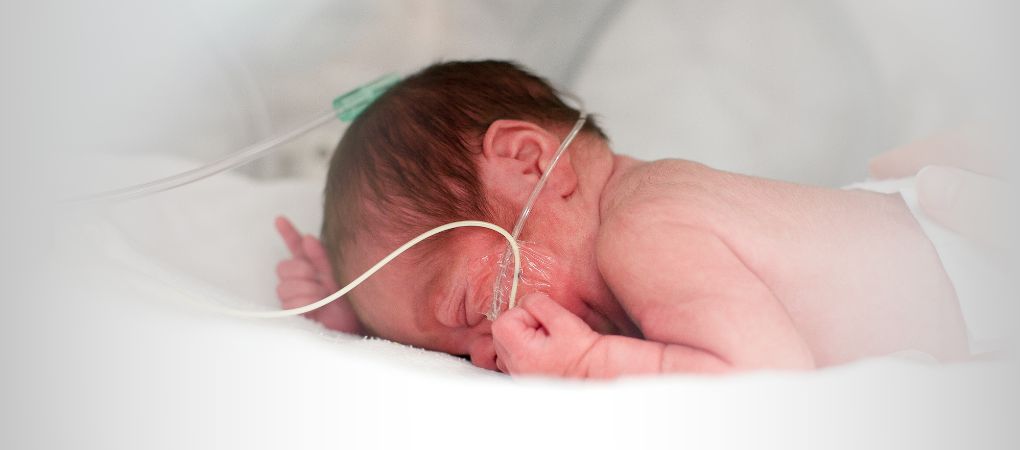Francesca Galiano
|
21/06/2022 - Last update 30/12/2022
Diego Lanaro, Nuria Ruffini, Andrea Manzotti, Gianluca Lista | Year 2017
Osteopathic manipulative treatment showed reduction of length of stay and costs in preterm infants, A systematic review and meta-analysis
Scope:
Prematurity
Type of study:
Systematic review with meta-analysis
Date of publication of the study’:
2017/Mar/01

Purpose of the study
- Objective: to assess the efficacy of OMT in reducing the length of stay and costs of hospitalization and complications in preterm infants
- Measured outcomes:
- Primary: length of stay (in days)
- Secondary: hospitalization costs, weight gain, average weight gain per kg per day, morbidity (complications), adverse effects of OMT
Methods
- Articles analyzed: 5
- Search string: combination of the following terms, free or as MeSH: osteopathic (free and MeSH), manipulat∗ (free and MeSH), treatment (free and MeSH), medicine (MeSH), premature∗ (free MeSH), infant∗ (free and MeSH), preemie∗ (MeSH) and newborn∗ (MeSH)
- Criteria of inclusion: Randomized controlled trials (RCT), quasi-RCT, controlled, single and multicenter studies; Before-after controlled studies with at least 1 intervention group and 1 control group; Time series studies interrupted with at least 2 measurements pre- and post-intervention; length of stay (LOS) as primary or secondary outcome; any language; preterm infants clinically stable or recovering from acute diseases; OMT performed by osteopaths on children directly in the incubator or cradle
- Criteria di exclusion: case-control studies, series of cases, case reports, conference proceedings and abstracts; studies in which data were simply collected without any kind of intervention; studies in which the OMT was applied together with other manual treatments.
Characteristics of the studies
- 4 RCT and 1 non-randomized observational study
- 4 single studies and 1 multicenter study
- all studies were considered of low risk of bias (according to the evaluation method of risk of bias – RoB – of the Cochrane)
- moderate heterogeneity (the studies showed some diversity, but all of them had length of stay as an outcome)
Participants
- Numbers in the smallest study: 20 infants in the OMT group and 21 infants in the control group
- Numbers in the biggest group: 352 infants in the OMT group and 343 infants in the control group
- Total: 636 infants in the OMT groups and 661 bambini in the control groups
- Mean age: 23 to 37 weeks of gestational age
Interventions and evaluations
in the OMT groups:
- 20-30 minutes sessions, 2-3 times a week, for one week only or for the entire length of stay
- OMT as black-box (ie, treatment based on the operator’s assessment) or visceral and indirect techniques (e.g. myofascial release, ligamentous tension balancing), in addition to standard treatments
- in the control groups: standard of care only (2 studies); osteopathic assessment (without treatment) in addition to standard of care (3 studies)
- OMT performed by osteopaths or students in osteopathy
Results
- Primary outcomes: Compared to standard of care, OMT showed a statistically significant reduction in length of stay, 2.71 days on average.
On a more specific analysis, the OMT favored a mean reduction in length of stay of 9 days for infants born before the 32nd week of gestation, 3 days for infants moderately preterm (32-35 weeks) and 2 days for slightly preterm infants (35-37 weeks)
- Secondary outcomes: the 3 studies that considered the hospitalization costs highlighted a statistically significant cost reduction (savings of approximately €1500 per child per day of hospitalization) in favor of the OMT
No adverse effects have been reported for the OMT, if not, perhaps, in 1 study, an extension of the time taken by some infants to reach a milk-based diet.
Discussion
Despite their heterogeneity, the studies highlighted how OMT could be an added value in the care of preterm infants, favoring a shorter length of stay – especially important for very preterm infants – and a significant reduction in costs for the health system.
Failure to detect adverse effects also suggests the inclusion of OMT in the care of preterm infants.
The greater reduction in length of stay of very preterm infants compared to the other subgroups may be linked to the fact that these children tend to be hospitalized much longer and to be subjected to special and longer lasting care.
Naturally, to be introduced into the delicate departments of neonatology, the OMT must show particularly robust results. At the moment, the effectiveness of OMT can be explained by the effects of nervous regulation (rebalancing of the activity of the two branches of the autonomic nervous system) and immune regulation (reduction of inflammatory cytokines) that OMT has been shown to induce in other subjects.
The review of Osteopedia
By Marco Chiera
Strengths: large group of preterm infants analyzed; it is highlighted how the OMT could fit into an extremely delicate hospital setting of healthcare and could really constitute, in combination with standard of care, an added value.
Limits: neonatology and preterm infant care is such a complex field that it is difficult to draw conclusions on the effects of a single intervention; an analysis of the therapies to which the infants were subjected is missing; in the sub-analyzes by gestational age, the number of groups is reduced compared to the entire sample; there is a lack of assessments on long-term outcomes.

Are you an osteopath?
Register and enjoy the membership benefits. Create your public profile and publish your studies. It's free!
Register now
School or training institution?
Register and enjoy the membership benefits. Create your public profile and publish your studies. It's free!
Register now
Do you want to become an osteopath? Are you a student?
Register and enjoy the membership benefits. Create your public profile and publish your studies. It's free!
Register now







